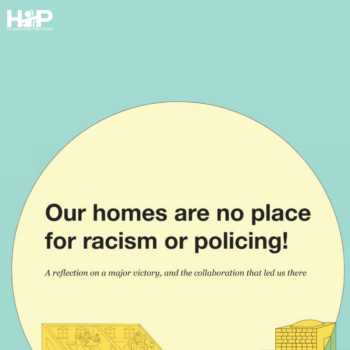| By Katie Hirono |
Today’s guest blog is by Katie Hirono from the Centre for Health Equity Training, Research and Evaluation at UNSW Australia. She is one of the co-authors of an HIA on the Trans Pacific Partnership Agreement (TPP).
Negotiators from the 12 TPP countries are convening this week in Atlanta for attempted last-stage negotiations, with ministers expected to meet from 30th September. Over the past five years, many public figures have commented on the TPP, including Senator Elizabeth Warren, Nobel Laureate economist Joseph Stiglitz, and reputable organisations like Doctors without Borders and the AFL-CIO. As we near the potential conclusion of negotiations, what can we say will be the impacts of this “21st century trade agreement?”
What is the TPP?
The TPP, or Trans Pacific Partnership Agreement, would be the largest free trade agreement (FTA) in the world. It will include 12 Pacific rim nations – Australia, Brunei, Canada, Chile, Japan, Malaysia, Mexico, New Zealand, Peru, Singapore, United States, Vietnam – and will potentially encompass 36% of world gross domestic product. Unlike most ‘old school’ FTAs that set rules related to the import and export of goods between countries, the TPP seeks to standardize domestic rules related to everything from copyright infringement to pharmaceutical patents. It has been argued that the TPP is a mechanism for the U.S. to impose domestic standards and agendas onto other countries. Note the exclusion of China from the current agreement. Once the TPP is finalized, any additional countries that want to join will have to agree to the rules already set in place.
Why should we be concerned?
Despite the broad and far-reaching implications of these trade provisions, the TPP is negotiated without public involvement and draft texts are confidential. Even members of Congress have restricted access to reading the text. Witnessing the effects of other trade agreements, many organisations are concerned with the TPP’s potential effects on health and human rights.
To understand the potential impacts, a team of researchers in Australia conducted a health impact assessment (HIA) on the proposed TPP. Using leaked draft texts, we determined what the potential provisions could be, and then mapped them out onto public health policy scenarios that could be implemented in the future. Keep in mind the TPP will only affect future policies, not ones that already exist. We then looked at how changes to those policies could affect health in Australia, particularly looking at who would be affected most.
Working with a technical and advocacy advisory committee, and knowing that there are no formal channels for the HIA to be supplied to decision makers, we decided to disseminate our findings to advocates who could then use them to inform their efforts.
What did we find?
In a nutshell, we found that the TPP has the potential to harm the health of people in Australia in four areas we looked at: access to medicines, changes to tobacco control policies, changes to alcohol control policies, and the regulation of food labelling.
In the area of medicines, we found that the extensions to monopoly periods which the U.S. is pushing for, would be likely to lead to increased out-of-pocket costs for consumers. This often leads to people taking less of their medication (or not at all) and is associated with higher hospitalizations and declining health, particularly for low income people or people with chronic conditions who are less able to accommodate rising costs.
Although tobacco control is far more advanced in Australia than the U.S., we found that additional policies, such as restrictions to tobacco marketing and regulation of e-cigarettes could be hindered by the TPP. This could happen through TPP provisions that protect intellectual property or protect against barriers to trade. Most concerning is the TPP’s investor state dispute settlement (ISDS) mechanism, which allows foreign companies to sue governments when they feel that their investments have been infringed upon by domestic policy. ISDS has been used to attack public health policy in the past. For example, Philip Morris used the ISDS provision of an investment treaty between Hong Kong and Australia to sue the Australian government over its implementation of tobacco plain packaging. While plain packaging is considered a best practice in tobacco control, Philip Morris’ use of the ISDS clause has cost Australia millions in defending the policy. Although it is extremely unlikely that Philip Morris will win, public health regulations can be put at risk through ISDS. In countries that can’t afford high litigation expenses, even the threat of using ISDS can have a chilling effect in which countries choose not to pursue innovative policies for fear of retribution. This is particularly troubling for populations that have high smoking rates, and that are in need of new and innovative anti-smoking policies.
We also considered how the TPP could impact future alcohol control measures, particularly restrictions on alcohol availability, bans on alcohol advertising, and pregnancy warning labels. We found similarly that TPP provisions may restrict the ability of the Australian Government to implement new alcohol control policies. Rules in the cross-border services chapter may prohibit governments from limiting the number of licensed alcohol outlets per geographic area. The public health evidence clearly shows that when alcohol is more available, people are more likely to drink, and to have higher rates of violent assault, drunk driving, and pedestrian injury. These impacts are particularly relevant to adolescents who have higher rates of risky drinking.
Lastly, front-of-pack nutrition labelling is not mandatory at this stage in Australia. Rather, it relies on industry compliance with a voluntary scheme. TPP provisions could require greater involvement of the processed food industry in policy decision making, which could influence the effectiveness of food labelling systems. Without adherence to best practices in food labelling, it is likely that there will be no change to the current high rates of overweight and obesity in Australia and their associated health effects, which is particularly relevant to low socioeconomic populations who often have high rates of obesity but lower health literacy rates.
While we focused on the particular impacts that could occur in Australia, it is likely that similar impacts, including those we did not assess, could take place in many of the 11 other countries involved, including the U.S.
What can we do about it?
We developed recommendations that could be applied to the current negotiations to avoid the potential harms we identified. For example:
- The TPP could include strong and clear public health exceptions which would prevent public health policy from being affected by trade concerns. They could also completely exclude harmful and unnecessary provisions like ISDS.
- HIA should be conducted after the final text is available to fully understand the potential impacts from the trade provisions.
- To improve the trade negotiating process in general, there should be greater transparency and public involvement, and formal channels for involvement of public health experts. This could include the release of draft texts and publication of the government’s negotiating position on issues of public interest.
Our advocacy partners used the findings and recommendations to put pressure on the political bodies involved in the negotiations. In some ways, we have seen great success from this – with Minister of Trade Andrew Robb refusing to agree to any monopoly extensions for some medications. Yet he still hasn’t ruled out having the ISDS clause apply to Australia.
Although negotiations have gone through 20 rounds, with many claiming to be “the final round,” it behoves us to consider the Atlanta negotiations as a key opportunity to inform the discussion. The U.S. Congress will need to approve the trade agreement once negotiations are final – so make sure you let your congress person know how you feel about the TPP! You can also throw your support towards many of the existing advocacy campaigns that are taking place in the U.S. Or simply read the findings from the full HIA report to keep yourself informed.
The Health Impact Assessment of the TPP was conducted by:
Katie Hirono and Fiona Haigh, Centre for Health Equity Training, Research and Evaluation, UNSW Australia
Deborah Gleeson, School of Psychology and Public Health, La Trobe University
Patrick Harris and Anne Marie Thow, Menzies Centre for Health Policy, University of Sydney
For more information about the TPP HIA in Australia, contact: Katie Hirono (k.hirono@unsw.edu.au).




